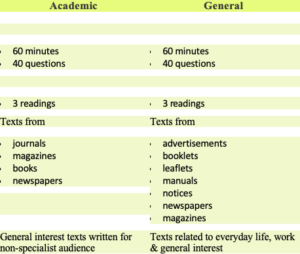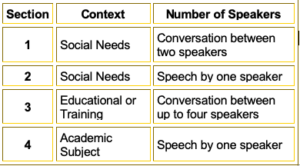by Labhesh | Nov 26, 2020 | Admissions counselling, Motivation, study abroad, Test, Toefl
In the event that you are a non-native English speaker who needs to learn at an institution in an English-speaking nation, more often than not you would be required to present a TOEFL score. The TOEFL doesn’t have a direct reviewing framework like what you have at schools, a wrong answer will unquestionably cause you to lose points and a right one will pick up you points. So, the TOEFL score itself can be confusing. This post ideally can assist with How is TOEFL Graded.
Register yourself with Team Anannt.
How is TOEFL Graded?

How is TOEFL Graded
The TOEFL has its own scoring scale and framework, and it’s anything but a percent correct score. That implies the most extreme score for the TOEFL test isn’t 100%. Rather, the most extreme score is 120 with 4 segments. Each segment (Reading, Writing, Speaking, and Listening) is worth 30 points.
In contrast to the SAT (Scholastic Aptitude Test) whose purposes of each area are similarly as significant as the generally speaking, with the TOEFL, the combined score out of 120 is the most significant number. Commonly, the schools and universities won’t request that you separate the total score into individual segments.
How is the TOEFL reviewed?

reviewing of TOEFL
The TOEFL is a standardized test, which implies the scores are ‘equated.’ This additionally implies the quantity of right answers you get in the test won’t relate precisely with the last score you get.
This is on the grounds that the TOEFL test producers might want to make the test and results as reasonable as could be expected under the circumstances. In some cases, a form of the test can be more troublesome than another adaptation. So, it won’t be reasonable for everybody stepping through the exam if the percent-correct evaluating framework is utilized. The TOEFL graders, other than taking a look at the good and bad answers, they additionally consider the general execution of everybody taking that test to at last think of the score. So as a rule, the TOEFL scores are practically identical in any event, when test-takers step through various examinations from one another.
Notwithstanding, the ETS doesn’t share their official evaluating and comparing scores framework with general society. So, we don’t actually have a clue how it is evaluated. In any case, remember that regardless of whether you are ‘unfortunate’ and have a troublesome than the normal understanding section, you will in any case be judged reasonably contrasted with other people who have the simpler understanding entry.
Know few last minute tips for TOEFL.
by Labhesh | Nov 24, 2020 | Admissions counselling, IELTS, Motivation, study abroad, Test
On the off chance that you are taking IELTS to concentrate abroad, at that point you will take the Academic IELTS Reading Module. So read the Format of The IELTS Reading Test.
In the event that you are taking IELTS for different purposes, for example, working abroad, at that point you will take the General Training Reading Module.
In any case, improving your reading for IELTS is significant as you will confront some intricate reading and troublesome jargon.

Module of IELTS Reading
About the Reading Test
Both IELTS Reading Tests, Academic and General Training, expect to evaluate the accompanying aptitudes:
- Reading for gist
- Reading for main ideas
- Reading for detail
- Understanding inferences and suggested meaning
- Recognising a scholar’s suppositions
- Attitudes and reason
- Following the improvement of an argument
The tests change in their substance:

Format of The IELTS Reading Test
The Academic IELTS Reading Module

follow this pattern
The Academic IELTS Reading Module takes an hour and there are 40 questions to reply. Each question is worth 1 mark.
The Reading Passages
There are three reading passages with an aggregate of 2,150-2,750 words. Writings are taken from diaries, magazines, books, and papers.
All the points are of general intrigue and the writings have been composed for a non-specialist audience. The readings are planned to be about issues that are proper to competitors who will enter postgraduate or college classes.
In any event one content will contain definite legitimate argument. One of the writings may contain non-verbal materials, for example, charts, outlines or graphs.
On the off chance that there are specialized terms which you may not know in the content then a glossary is given. The writings and questions become more troublesome through the paper.
The Questions
Guidelines are clear and simple to follow and you will be given instances of any new question types. Messages and questions show up on a Question Paper which you can compose on however not detract from the test room.
You should address all questions on an Answer Sheet during the hour – there isn’t additional time toward the conclusion to move your responses to an answer sheet.
The position of the question changes- a portion of the inquiries may precede an entry, some may come in the wake of, depending on the question type.
These are the sorts of question you can hope to find in the test:
- short-answer questions
- multiple decision
- sentence culmination
- notes/outline/graph/stream diagram/table culmination
- choosing a heading for a section
- identification of author’s perspectives/claims – truly, no or not given
- identification of data – true, false or not given
- classification
- matching records/phrases.
There is an answer sheet and you should enter all the questions on there during the test. There is no additional time toward the conclusion to enter the scores. So read the tips of IELTS Reading Test.
Refer to the Format of IELTS Listening Test.
by Labhesh | Nov 23, 2020 | Admissions counselling, IELTS, Motivation, study abroad, Test
Read this following article to Know the Format of IELTS Listening Test and also refer to the tips and format for IELTS Writing Test.

Know the Format of IELTS Listening Test
The listening module endures 40 minutes – 30 minutes listening and 10 minutes to add your responses to an answer sheet. There are 4 areas, each one getting more difficult.
The initial two sections of the test are worried about social needs.
The last two sections are worried about circumstances related all the more near education and training contexts.
All the IELTS listening topics are of general interest and it has no effect what subjects you are wanting to consider or what work you plan to do.
A scope of English pronunciations and vernaculars are utilised in the recordings which mirrors the worldwide use of IELTS

Format in brief
Section One
In the primary segment there is a discussion between two speakers. For instance – a discussion about travel arrangements, booking convenience, or choices on a night out.
Section Two
The subsequent section is a monologue (a discourse by one individual). It will be set in an ordinary social setting. For instance – a discourse about student administrations on a University grounds or plans for suppers during a gathering.
Section Three
Section three is a discussion between up to four individuals. For instance – a discussion between a coach and a student about a task or between three students arranging a research project
Section Four
The last part is another monologue. It is a lecture or talk of general academic interest such as a university lecture.
Question Types

question types
The accompanying sorts of inquiry may show up on the test:
- multiple decision
- short-answer questions
- sentence finish
- notes/rundown/graph/stream outline/table fruition
- labelling a graph which has numbered parts
- classification
- matching
You will be given guidelines on the test paper on the most proficient method to respond to the questions, and they are clear and simple to follow. You will be given instances of any unfamiliar question types.
During the IELTS listening test, you are offered time to read the questions and enter and then check your answers. You enter your answers on the question paper as you listen and when the tape closes ten minutes are took into consideration you to move your responses to an Answer Sheet.
One mark is granted for every one of the 40 things in the test. So to get a perfect score, read the tips for IELTS Listening Test.
by Labhesh | Nov 20, 2020 | Admissions counselling, IELTS, Motivation, study abroad, Test
The IELTS test position additionally changes among Academic and General Training for the Writing Test. Refer to the Tips and Format for IELTS Writing Test mentioned below. Also, know the Format of IELTS Speaking Test.
Format for IELTS Writing Test

get equipped with IELTS Writing Test format
Academic
There is a Task 1 and a Task 2. The test time is an hour. It is prescribed in the test to go through 20 minutes on task 1, as it is worth less marks, and 40 minutes on task 2.
- Task 1 is depicting a chart, outline, process or map.
- Task 2 is composing an academic essay on a subject of general interest.
General Training
Again, there is an undertaking 1 and an assignment 2, with a total test time of an hour, and a suggestion to go through 20 minutes on task 1 and 40 minutes on task 2.
-
Task 1 is composing a letter to somebody, either casual, for example, a companion, or more formal, for example, an organization director, on a given topic.
-
Task 2 is composing an academic essay on a subject of general interest.
Tips:

tips to tackle IELTS Writing section
Do IELTS Writing Task 2 First

complete writing task 2 before task 1
Since IELTS Writing Task 2 is the equivalent on both the Academic and General tests, many think that its simpler than Task 1 (particularly authors of the Academic test). The other significant preferred advantage Task 2 has is that it’s worth a greater mark than Task 1. Obviously, it likewise takes more time to finish. Consequently, it’s ideal to not just dedicate most of your chance to Task 2 yet to finish it first.
You would prefer not to stall out on Task 1 and just leave yourself 20 minutes to wildly compose something for Task 2. IELTS suggests going through 40 minutes on Task 2 and around 20 minutes on Task 1. This is a decent rule obviously; your own experience may vary. Try not to get too worried about adhering to these specific time limits – simply ensure you don’t give more opportunity to Task 1 than you have to.
Avoid Informal Writing

tips to avoid informal writing
This tip applies basically to the Academic test, yet it’s critical to remember for the General test too. While your answers don’t need to be in formal style on the General test, it’s ideal to keep away from certain casual composing rehearses. For example, abstain from utilizing shortenings – write out the full word. Likewise try not to write in the first or second individual (I, me, you) except if instructed to do as such.
Paraphrase, Don’t Copy

paraphrase the text
You ought to never duplicate any piece of the inquiry into your reactions for either Task 1 or 2. Rather, figure out how to reword. You may need to utilize some portion of the questions in your reactions so as to illustrate a point however on the off chance that you do, ensure you put it into your own words.
Practice, Practice, Practice!

keep practicing
The best way to show signs of improvement at writing is to continue doing it. Take the same number of training tests as you can before the genuine test. Get somebody you know with solid English writing abilities to investigate your answers and offer input.
Hope you now are well equipped with the Tips and Format for IELTS Writing Test.
Nevertheless, to avoid 6 common mistakes that students make in IELTS, refer to the link.
by Labhesh | Nov 19, 2020 | Admissions counselling, IELTS, Motivation, study abroad, Test

Format of IELTS Speaking Test
The IELTS test format is four modules in which you are tested on your speaking, listening, reading, and writing skills.
You have to settle on whether to take the Academic or General Training Test versions.
In light of your outcomes, you are then given a band score between 0-9.
The IELTS test format fluctuates as indicated by why you are stepping through the examination. There are two test versions accessible, Academic or General Training.
They utilize a similar band scales and the two versions survey the four language skills of speaking, listening, reading, and writing.
Academic is for individuals applying for advanced education for example college, or expert enlistment.
General Training is for individuals moving to the UK, Australia, or Canada, or applying for training programs, work experience, or optional instruction in an English-talking condition.
Obviously, the Speaking segment is additionally one which test-takers locate the most overwhelming. They stress over their week vocabulary, familiarity and failure to talk certainly.
The IELTS speaking test is the equivalent for both academic and general training candidates.
You are evaluated by an IELTS analyst in a one-to-one interview which keeps going 11-14 minutes. It is separated into three sections.

time taken for the speaking test
Before reading the Format, register yourself with Anannt for IELTS Preparation.
IELTS Speaking Test Format

other than speaking, be careful with your gestures
Section One:
You are posed a few inquiries about either your home, old neighbourhood, study or work, and then questions around two different themes haphazardly picked by the examiner. These could be about things, for example, occasions, the climate, visiting galleries, reading, style, travelling and so forth.
Section Two:
You need to represent two minutes on a subject the analyst gives you. For instance, you could chat on an educator you loved, an evening gathering you joined in, or a most loved spot to visit. You are given a pencil and paper and given one moment to set up your discussion.
Section Three:
You have a conversation with the analyst around more unpredictable themes identified with your section two talk. So, for instance on the off chance that you talked about an instructor you enjoyed to a limited extent two, section three could be inquiries regarding the instructive framework in your nation and all the more for the most part.
Know the tips for your IELTS Speaking Test.
Hope the article was useful. If you have any doubt, do comment!!!
by Labhesh | Nov 17, 2020 | GMAT, Motivation, study abroad, Test

GMAT Strategies
During the seriousness about business college, take the GMAT test. Schools realize that on the off chance that you take the GMAT test, you are serious about acquiring a graduate business degree. They likewise know it’s a demonstrated indicator of your capacity to prevail in your picked program. Thus, to score well it’s important to know GMAT Strategies.
Take the one business college test that lifts you from the remainder of the pack since it:
- Demonstrates your responsibility, inspiration, and capacity to prevail in business college.
- Measures your basic reasoning and thinking aptitudes, the two most pertinent abilities to the world’s top alumni business programs.
- Connects you with the best-fit program through customized program suggestions.
- Increases your winning potential and open a universe of chances.
- Business schools trust the GMAT test to advise affirmation choices.
Attempting to plan for the GMAT, yet don’t have a great deal of time left before the test? Regardless of whether you’re in the last phase of a long GMAT prep plan or planning to pack all your concentrating into only half a month, here are some last-minute GMAT Strategies to assist you with acing the test.
4 GMAT Cram Strategies:
In case you’re preparing for the GMAT at the last hour, you’ll have to do so successfully, making the most effective utilization of your time. We should go over the four best last minute GMAT prep tips to benefit as much as possible from your GMAT cram sessions.
#1: Take a Practice Test

practice before the main day
The best method to get ready for the GMAT is to take practice tests with questions composed by the Graduate Management Admissions Council (GMAC) in automated versatile organization (which utilizes a calculation progressively to change in accordance with your ability level as you travel through the test). The appropriate response clarifications will assist you with deciding your weak areas as far as ranges of abilities, question types, and segments you’ll have to concentrate on in your prep.
#2: Review the Format

review the format
Acquainting yourself with the organization of the GMAT is as significant as planning for the content of the questions themselves. You might be a math star, however the GMAT tests quant aptitudes in different ways. You’ll likewise need to become accustomed to the musicality, pacing, and visuals of the test so nothing is an amazement on test day. You can do this, obviously, by taking practice tests, however you ought to likewise survey resources like the Official Guide for GMAT Review 2017 to help yourself to remember the number of questions in each segment and what question types you’ll see on each area of the GMAT.
#3: Review Math and Grammar Rules

also go through math and grammar rules
While the GMAT isn’t a simple test, essential math and syntax aptitudes are critical to your prosperity on the test. Utilize the diagram of fundamental math ideas in the official GMATPrep Software to audit critical abilities and ideas for the quant area.
#4: Go Over Past Practice Problems

review past practice problems
On the off chance that you’ve done arrangements of training issues or finished practice tests, investigate the appropriate response clarifications for the ones you did mistakenly or address types that you will in general battle with. Attempt to see where your reasoning is self-destructing or where you’re committing imprudent errors so you can focus on those shaky areas and abstain from making comparable mistakes on the actual GMAT.
5 GMAT Test-Taking Strategies
#1: Don’t Be Afraid to Guess

don’t leave, but guess
It’s essential to move rapidly through the test and not get hung up on any one question. It may be disappointing to need to figure, yet the GMAT is structured with the goal that you aren’t relied upon to get each and every question right. The manner in which the scores are scaled implies that you can at present get a high score and a high percentile positioning without addressing each question accurately.
In case you don’t know how to address a question, first try to eliminate at least one answer choices. In any case, regardless of whether you can’t, don’t stop for a second to speculate. You’ll chance more regarding time and intellectual competence by fixating on a single question than by speculating.
#2: Choose the Shortest Sentence Correction Answer Choice

Shortest Sentence Correction Answer Choice
In case you’re stuck on a sentence remedy question and need to figure, pick the briefest one. If all else fails, it’s ideal to go with the briefest answer decision. The GMAT by and large favours compact choices over longer ones, so it’s a decent wager (however obviously not 100%).
#3: Work Backwards on Math Problems

working backwards make it easy
For GMAT critical thinking inquiries on the quant area in which you’re asked to solve for an unknown variable, you can regularly work in reverse to spare time. You may have known about this procedure as “plug and chug.” Use one of the offered response decisions to plug into the equation; in the event that you pick one in the given numerical range, you can utilize the procedure of elimination of at least one of different answers too. For instance, if answer choice C is 35 and its excessively low, you can eliminate answer choices A and B in the event that they’re, state, 17 and 21.
#4: Use the Provided Scratch Pad

use the scratch pad to note down your thoughts and other related things
At the test, you’ll be given a double-sided laminated scratch pad to compose on with a marker. Here and there, students attempt to recollect significant details from perusing appreciation entries or figures in math issues in their minds. While this may appear as though it’s sparing you time, it really saps your time and vitality.
Keep in mind, you’ll be focused and under time tension, which may make you progressively inclined to overlook little details. For instance, in three-part reading comprehension passages, you’ll need to flip through different pages with various types of data, which can take up a ton of valuable time in the event that you don’t take notes during your initial read. Utilize the scratch pad varying to move easily through each question.
#5: Outline Your Essay

prepare an outline
It might appear as though you should begin composing your 30-minute Analytical Writing Assessment paper immediately, however sketching out already really spares you time and will deliver better outcomes. It will assist you with arranging your thoughts and to communicate them all the more relevantly and successfully, and you can allude back to it as you compose, so you won’t overlook any initial thoughts you had while reading. Utilizing the content manager on the screen or your scratch pad, make a blueprint that tends to the principle contention in the given entry and the significant blemishes in its thinking that you intend to examine. In the event that you utilize the content tool to make your blueprint, simply make a point to eradicate it before you “turn in” your essay.
Day before the GMAT:
- Don’t overstrain yourself on the day preceding your test.
- What hasn’t soaked in at this point won’t mystically hold up itself in your cerebrum short-term.
- Do complete the process of studying early. Take the night off to accomplish something fun and unwinding.
- Do get a decent night’s rest.
Test Day:
- Do get up right on time, have breakfast and show up at the test community 30 minutes before your planned test time.
- Do make sure to bring your visa as a picture ID and water and a vitality bar or other light reward to eat during the breaks.
- Do play out a warm-up directly before the test. Unravel a couple of simple inquiries to get into “math mode.”
- Do remain hopeful. In the event that the questions appear to be excessively troublesome, that may really be a decent sign as your score is subject to the trouble level you figure out how to get from the calculation. Remain quiet, work rapidly however efficiently without hurrying or bouncing into ends.
- Don’t let any single question remove you from your pace or core interest.
- Remember the GMAT Strategies! 🙂
- Also, go through the GMAT Format once.
Look for the nearest test centre and book your GMAT Exam Dates.




























Recent Comments